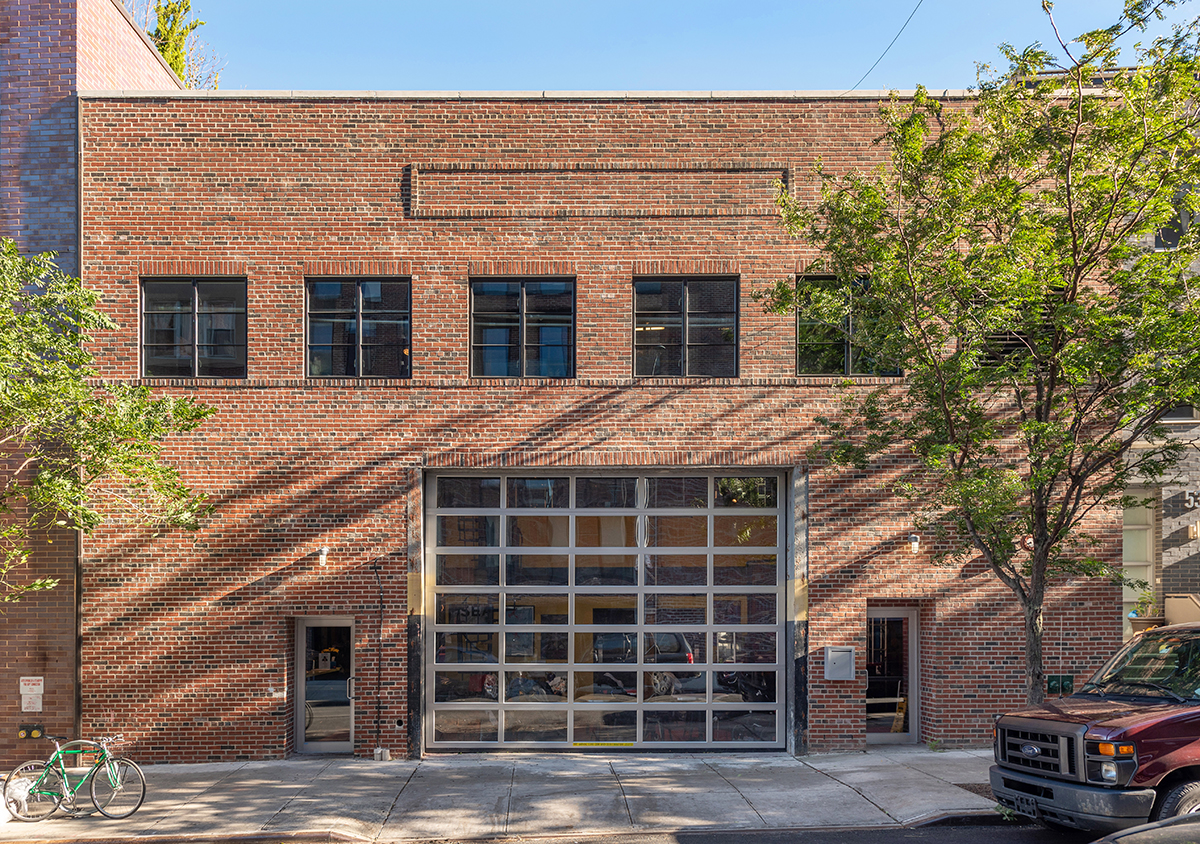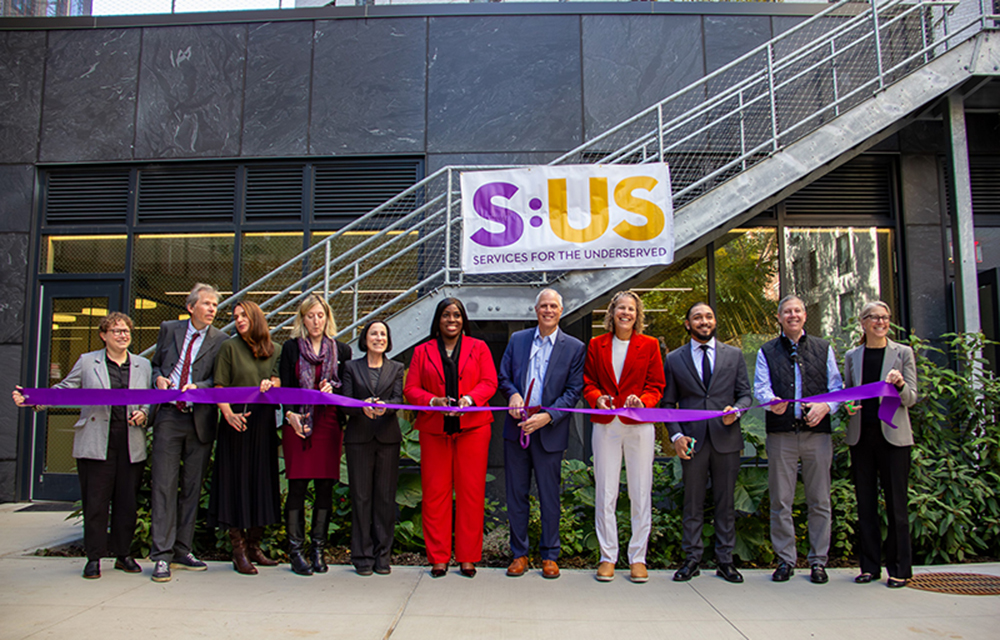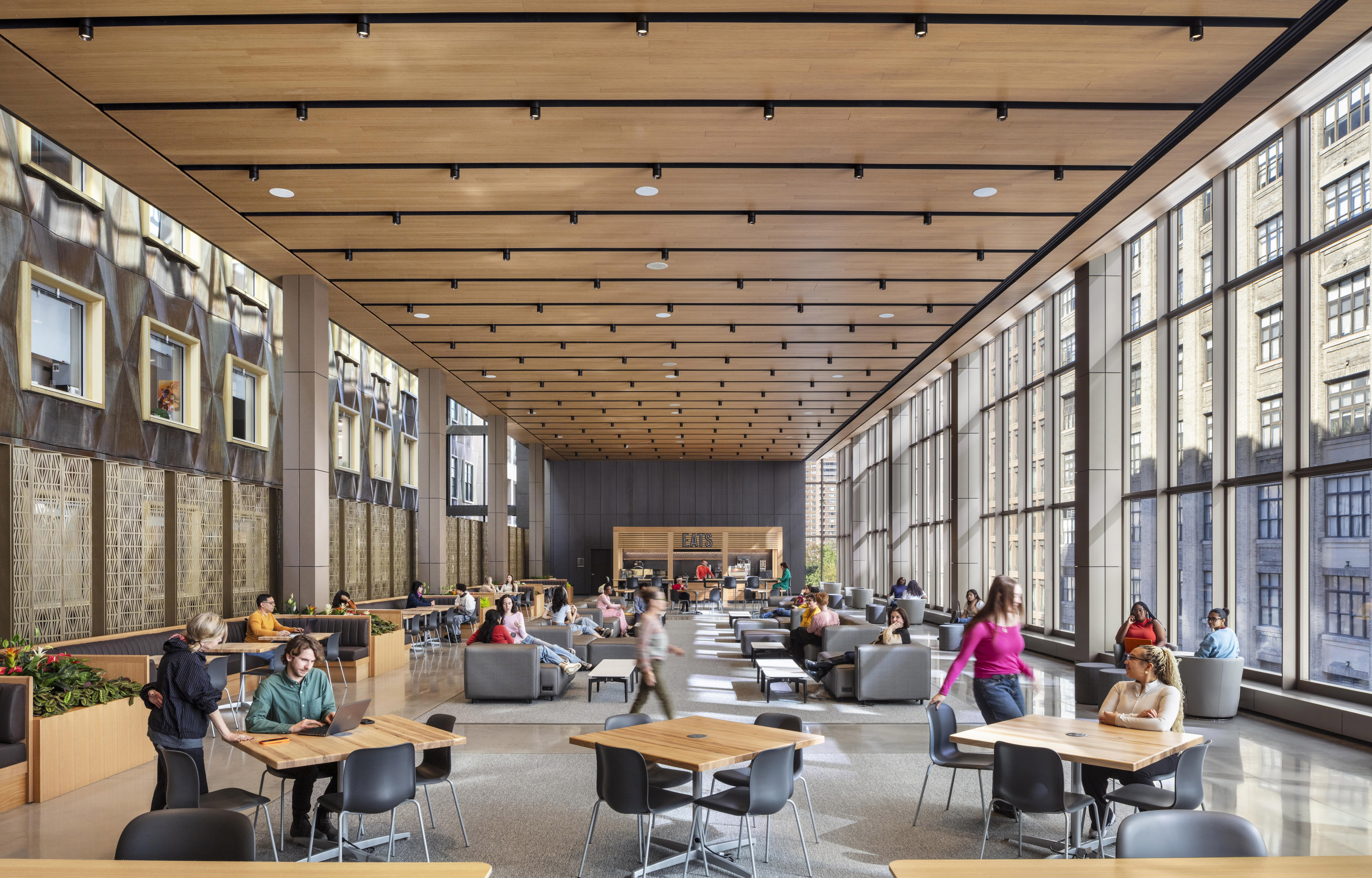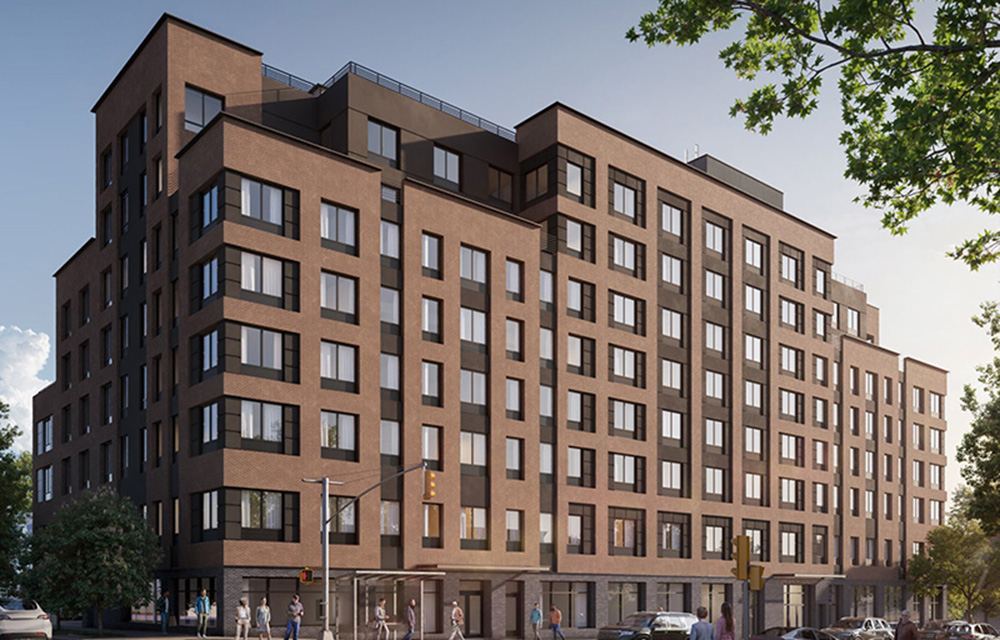CTA completes exterior renovation of 51 North First Street, Brooklyn; 5,000 s/f, one-story building houses SLAM

Brooklyn, NY CTA Architects, P.C. has completed the exterior renovation of 51 North First St. The 5,000 s/f, one-story building in the Williamsburg section houses the non-profit STREB Lab for Action Mechanics (SLAM), a dance and theater performance venue and an open-access education and rehearsal space. The project was the first phase of the multi-phased renovation that will modernize and upgrade the entire popular venue.
SLAM is the brainchild of Elizabeth Streb, a choreographer, performer, and teacher of contemporary dance, as well as an author, speaker, and MacArthur “Genius” Award-winner.
In 2007, Streb had the opportunity to purchase the building. She did so with assistance from the New York City Department of Cultural Affairs (DCLA), city council, mayor’s office, and Brooklyn borough president’s office. More recently, the city again stepped in to provide a total of $4.886 million in capital funding to renovate the building: Over the last seven years, the mayor’s office gave a total of $2.404 million including support from mayor Bill de Blasio; N.Y. city council allocated $1.732 million with support from councilman Stephen Levin; and Eric Adams, borough president, allocated $750,000 for the project. These funds will be administered by DCLA, which, through its capital program, supports construction and renovation projects at cultural organizations throughout the five boroughs of NYC.
The CTA principal in charge of the project, Craig Tooman, AIA, LEED-AP, has been on the SLAM board of directors for the past decade. “The structure’s 24-ft. high ceilings and 50’x100’ clear-span provide an excellent space for the dance company’s rehearsals and classes. SLAM’s ability to accommodate up to 150 people at a time in the performance space has made it an integral part of the community. My family has been taking advantage of SLAM classes and performances for years. We at CTA wanted to do all we could to restore the facility, so it could continue to provide its services to the people of this city for years to come,” he said.
Beginning repair work with the NYC grants requires a great deal of coordination to ensure that work is done in accordance with stipulations put forth by the grantees, the oversight agencies, and the building code. The façade, however, has been in dire need of repair for some time; work needed to begin as soon as possible.
The existing brick was cracking, bowing, and bulging; the steel-framed factory-type single-pane casement windows were in a state of disrepair and far from being energy efficient.
Thus, the SLAM board of directors decided to break the work into two distinct phases. Phase I, just completed, repaired the façade. This work has been made possible with financial support from the Howard Gilman Foundation, New York Community Trust - LuEsther T. Mertz Advised Fund, Booth Ferris Foundation, and a circle of generous individuals. In addition, the Phase I of the renovation would not be possible without the generous donation of goods and services by multiple companies. CTA provided its Phase I architectural services on a pro bono basis. Services were also provided pro bono by the expeditor, Municipal Building Consultants, Inc. Belden Brick donated the bricks for the project at the cost of delivery only. Skyline Windows donated the replacement casement upper floor windows. Taurino Management donated five gallons of intumescent paint for the fireproofing of the steel lintels at the window and door openings, while SAGE Builders Corporation donated the partial cost of the two aluminum swinging doors with full-glass lights. Total Structural Concepts, Inc., which served as general contractor, performed its work at cost.
Phase II, to be fully funded by the nearly $4.9 million in city grants, will include the installation of an interior mezzanine and elevator, which will provide additional space for dancers and administration, as well as offices and a conference room. This phase also includes the redesigning of the lobby, the creation of a dancer dressing room/green room, and energy-efficient upgrades, such as replacing the existing garage door with a custom aluminum and glass insulated door, the installation of wall and ceiling insulation, new ceiling fans to circulate air within the space and energy-efficient light fixtures.
SLAM is open seven days a week, year-round. Thus, over the course of a year, is serves nearly 10,000 people: 5,000 audience members at nearly 40 shows; 800 students weekly at nearly 60 weekly classes; 3,000 city school children and community organization constituents including marginalized and at-risk youth; 200 artists who rent SLAM to create and present work, teach, and take classes; 600 tweens and teens who attend monthly SLAM ACTION CLUBs; and 250 children who attend SLAM summer camp. All of SLAM’s activities – rehearsals, demonstrations, workshops, and classes – are open to the public. The building also accommodates SLAM’s renowned trapeze rig.
Phase I Details
Phase I restored and stabilized the front façade, and significantly improved the facility’s energy efficiency. It also set the stage for the future interior work of Phase II. The project begun with the replacement of all of the face brick. The bricks were set in custom-colored type-N mortar to match the original mortar color. According to Alanna Jaworski, AIA, CTA’s project manager, “We raised the upper windows by about a foot-and-a-half to accommodate the new interior mezzanine that will be added in Phase II. The new operable aluminum casement windows are highly energy efficient, far more than those we have replaced.” In addition, Phase I work included widening of the two swinging side doors, and the construction of a raised parapet.
Challenges
One of the biggest challenges involved safety and logistics, as SLAM – open seven days per week – was at no time closed for any of the work. “Even when we were demolishing the parapet and had the wall open to the sky above the level of the window lintels, the facility still remained open,” said Chelsea Brandt, CTA’s project designer. This wall opening was due to the need to replace both the face brick and the backup, from the existing window sill level all the way up through the parapet. “Of course, we did this in the least obtrusive way possible, working in phases, using temporary protection and sidewalk level fence enclosure, so only small parts of the façade were open at any one time.” Outside, the team used a plywood protection and temporary tarps. The project team protected the interior from debris through the use of temporary sheeting and by separating the areas under construction from the rest of the facility.
Another challenge was budget, as SLAM is a non-profit organization with limited funds. However, as noted above, members of the design and construction team donated services and materials free or at cost. In addition, CTA has been able to meet the project’s objectives through value engineering solutions such as using CMU back-up in lieu of brick back-up, by raising the brick parapet to a legal height of 42” above the finished roof surface instead of installing a new steel railing inboard of the existing parapet, and by reusing the existing mechanical louvers instead of purchasing new ones
“I am excited about the completion of the exterior renovation of our building. The studio’s new, welcoming façade reflects the quality of our programs and fits very well into the mixed industrial and residential vibe of our Williamsburg neighborhood,” said Streb. “We were very lucky to collaborate with an architect who understood and appreciated both the historic character of our building and the need to create an inviting threshold to our performance and dance space. Craig Tooman, along with his CTA Architects team, has devised a very creative approach that allowed us to complete the exterior renovation within a limited budget, while preserving and building upon the history of our facility. CTA even convinced the design and construction team members to donate many of the materials – the garage door, the windows, the glass blocks, even the bricks and mortar. We would never have been able to renovate our studio without Craig’s support and involvement.”
Troutbrook expands with boutique condo project and Marriott Fairfield Inn & Suites renovation








.gif)
.jpg)
.gif)
.gif)